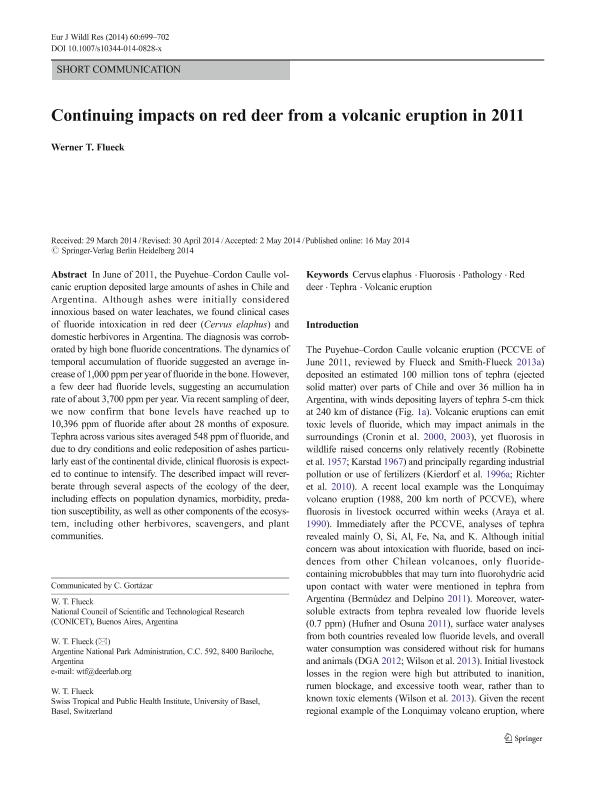Artículo
Continuing impacts on red deer from a volcanic eruption in 2011
Fecha de publicación:
05/2014
Editorial:
Springer
Revista:
European Journal of Wildlife Research
ISSN:
1612-4642
e-ISSN:
1439-0574
Idioma:
Inglés
Tipo de recurso:
Artículo publicado
Clasificación temática:
Resumen
In June of 2011, the Puyehue–Cordon Caulle volcanic eruption deposited large amounts of ashes in Chile and Argentina. Although ashes were initially considered innoxious based on water leachates, we found clinical cases of fluoride intoxication in red deer (Cervus elaphus) and domestic herbivores in Argentina. The diagnosis was corroborated by high bone fluoride concentrations. The dynamics of temporal accumulation of fluoride suggested an average increase of 1,000 ppm per year of fluoride in the bone. However, a few deer had fluoride levels, suggesting an accumulation rate of about 3,700 ppm per year. Via recent sampling of deer, we now confirm that bone levels have reached up to 10,396 ppm of fluoride after about 28 months of exposure. Tephra across various sites averaged 548 ppm of fluoride, and due to dry conditions and eolic redeposition of ashes particularly east of the continental divide, clinical fluorosis is expected to continue to intensify. The described impact will reverberate through several aspects of the ecology of the deer, including effects on population dynamics, morbidity, predation susceptibility, as well as other components of the ecosystem, including other herbivores, scavengers, and plant communities.
Palabras clave:
Fluorosis
,
Cervus Elaphus
,
Volcanic Ashes
Archivos asociados
Licencia
Identificadores
Colecciones
Articulos(CCT - PATAGONIA NORTE)
Articulos de CTRO.CIENTIFICO TECNOL.CONICET - PATAGONIA NORTE
Articulos de CTRO.CIENTIFICO TECNOL.CONICET - PATAGONIA NORTE
Citación
Fluck, Werner Thomas; Continuing impacts on red deer from a volcanic eruption in 2011; Springer; European Journal of Wildlife Research; 60; 4; 5-2014; 699-702
Compartir
Altmétricas




